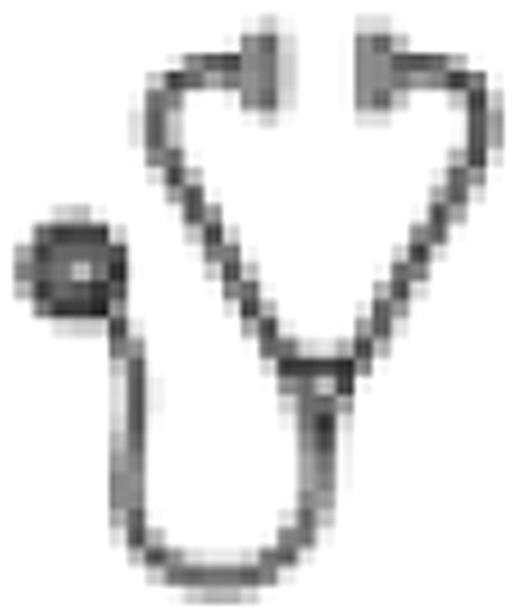Abstract
Although acute myeloid leukemia (AML) with inv(16)(p13.1q22) or t(16;16)(p13.1;q22) [hereafter referred to as inv(16)] is considered as a favorable AML subset, 30-40% of the patients (pts) are not cured by the current treatment strategies. Various genetic markers have been assessed to identify pts who are at high risk to fail therapy. However, the results among the different studies were not fully consistent.
We studied diagnostic bone marrow and/or blood specimens from 179 adult AML pts with inv(16) for secondary chromosome abnormalities and gene mutations in FLT3 [internal tandem duplications (ITD) and tyrosine kinase domain mutations (TKD)], KIT, JAK2 (V617F) and in N-and K-RAS. All pts were treated on one of 7 prospective protocols of the German-Austrian AML Study Group (AMLSG) including anthracycline- and cytarabine-based induction therapy, and consolidation therapy incorporating higher doses of cytarabine in various settings, but also autologous and allogeneic stem cell transplantation. Multivariable analyses were performed to assess the prognostic value of gene mutations on relapse-free (RFS) and overall survival (OS) and were stratified for treatment protocols.
At least one gene mutation was found in 84% of the pts with 21% of the pts having multiple mutations. Pts with gene mutations ≥2 showed no significant differences in WBC, incidence of trisomy 22 and age. Mutations were most frequent in RAS (53%), followed by mutations in KIT (37%) and FLT3 (17%) [FLT3-TKD (15%) and FLT3-ITD (4%)] genes. No mutations were detected in JAK2. Concurrent mutations of KIT and RAS in the same leukemia sample were less likely to occur (P=0.003) than expected based on their frequencies as single markers; no other significant interactions between the gene mutations were observed. Median age of the cohort was 41 years (yrs; range, 18-74 yrs), and median white blood count (WBC) was 38.3 × 109/l (range, 1.1 to 294.9 × 109/l). Median follow-up for survival according to Korn was 4.9 yrs [95%-confidence interval (CI), 4.3-6.0 yrs]. While one multivariable model was constructed using the mutations in KIT, FLT3 and RAS as covariates (model I), the other included the number of mutated genes (≥2 vs <2; model II) as single variable. Additional covariates included in the multivariable models were age, log10(WBC) and presence of trisomy 22. Model I revealed mutated KIT [Hazard ratio (HR), 1.85, P=0.04] and mutated FLT3 (HR, 2.03, P=0.04) as adverse factors for RFS, and mutated FLT3 (HR, 2.39, P=0.03) and older age (HR for 10 yrs change, 1.62, P=0.003) as significant factors for shorter OS. Model II revealed number of mutated genes ≥2 (HR, 2.38, P=0.004) and higher WBC (HR for change of one unit on log10 scale, 1.94, P=0.03) as adverse factors, and trisomy 22 (HR, 0.46, P=0.05) as favorable factor for RFS. In addition, number of mutated genes ≥2 (HR, 1.99, P=0.04) and older age (HR for 10 yrs change, 1.57, P=0.004) predicted for a shorter OS. Additional univariable analyses also revealed that pts with KIT mutations had a worse RFS compared with KIT wild-type (P=0.03; 5-yr RFS rates, 42% vs 60%), and that pts with FLT3 mutations had in trend a shorter OS compared with FLT3 wild-type pts (P=0.08; 5-yr OS rates, 58% vs 70%). Importantly, in univariable analysis, pts with number of mutations ≥2 had a worse RFS (P=0.009; 5-yr RFS rates, 36% vs 58%), but their OS was not significantly shorter (P=0.16; 5-yr OS rates, 58% vs 71%) than in pts with number of mutations <2. However, once pts with trisomy 22 were excluded, the group with number of mutations ≥2 had a worse OS (P=0.02) than the group with number of mutations <2.
In this large cohort of genetically well defined inv(16)-positive AML we show that KIT and FLT3 mutations are independent factors for RFS and OS, respectively. Even more important, we demonstrate for the first time that harboring ≥2 secondary molecular lesions is an independent predictor for a worse RFS and OS. Thus, comprehensive genetic characterization may improve outcome prediction for AML with inv(16). Pts with multiple mutations may be candidates for a more aggressive treatment in combination with therapies targeting the mutated tyrosine kinases and GTPase proteins.
No relevant conflicts of interest to declare.

This icon denotes an abstract that is clinically relevant.
Author notes
Asterisk with author names denotes non-ASH members.

This feature is available to Subscribers Only
Sign In or Create an Account Close Modal